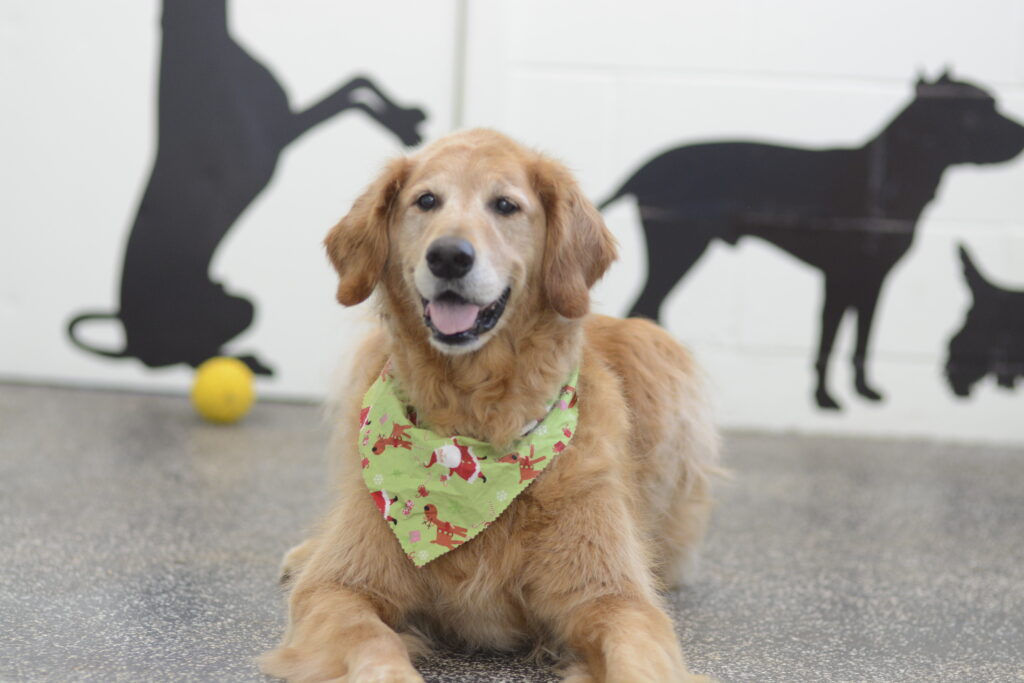Why Breaking Bad Habits in Dogs Starts with Consistent Training
Many dog owners hope their pet will “grow out of” certain behaviors, such as barking for food, begging at the table, or ignoring commands. But the truth is: dogs don’t grow out of bad behavior, they grow into it. Without consistent guidance, these behaviors often become deeply ingrained. That’s why understanding dog behavior problems and committing to consistency in dog training is essential at any age.
A Dog Trains a Person: Brody’s Story
Let me introduce you to Brody, a lovable Golden Retriever who trained his human far more effectively than the other way around, at least in the beginning. When I met Brody, he was already five years old and living with my now-husband, Rich, who had raised him since he was a puppy.
Brody had developed strong attention-seeking behaviors. Every time Rich sat down to eat, Brody would bark or nudge his lap until food was handed over. “How can you ignore a face like that?” Rich used to say. The habit had been cute when Brody was a tiny puppy, but now that he was full-grown and stealing food off forks, it wasn’t so adorable anymore.
Breaking Bad Habits in Dogs Requires Intention
As a professional dog trainer, I knew we had to break Brody’s habits, not with punishment, but by replacing them with better behaviors. This is key when breaking bad habits in dogs. Don’t just say “no,” give them an alternative.
In Brody’s case, we taught him to lie on a mat during meals instead of hovering at the table. Since he had five years of reinforcement behind his old routine, it wasn’t easy. I couldn’t even sit down to eat at first. I had to reward him every few seconds while standing and eating. It took several training sessions, but eventually, Brody could relax on his mat while we enjoyed a peaceful, bark-free meal.
What Happens When You’re Not Consistent
Years later, when Brody was 11, he underwent emergency surgery for cancer. The prognosis was grim, and the doctors gave him only a few months to live. Naturally, our rules flew out the window.
We let Brody enjoy whatever he wanted. He returned to his old habits, eating from the table, sticking his head into chip bags, and even stealing ham from the refrigerator. And we let it slide because we just wanted to make him happy. But the result was proof of a simple truth in training: dogs thrive on consistency. Without it, even the most well-trained dog can regress.
Training Older Dogs: It’s Never Too Late
After a month of canine anarchy, I decided it was time to bring structure back. Despite his age, Brody responded beautifully to training again, not because he had “grown out” of his bad habits, but because his foundation skills were still there. It took work, but he resumed lying on his mat during meals.
The moral? Training older dogs is absolutely possible, but it requires patience and structure. Most importantly, it requires consistency.
Attention-Seeking in Dogs: Don’t Reinforce It
Many behaviors that frustrate dog owners are rooted in attention-seeking. Dogs learn quickly what gets a reaction, whether it’s positive or negative. Barking, whining, pawing — if any of these result in food, play, or eye contact, the behavior gets reinforced.
The longer you allow a behavior, the stronger it becomes. That’s why dogs don’t grow out of bad behavior; they grow into it.
Final Thoughts: How to Break Bad Habits and Build Better Ones
If your dog is struggling with problem behaviors, don’t wait and hope things will change. Act early and stay consistent. Here are a few takeaways:
-
🐕 Replace bad habits with incompatible behaviors (e.g., mat stays instead of begging).
-
🕒 Stay consistent, especially during high-distraction situations like meals.
-
🧠 Train older dogs using the same principles as young ones, just with more patience.
-
🚫 Avoid reinforcing attention-seeking, even accidentally.
-
🔁 Reinforce desired behavior frequently and clearly.
Remember, your dog is always learning, whether you’re actively training or not. The question is: what are they learning?

